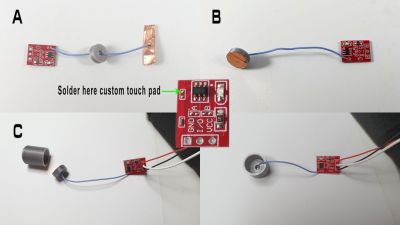Introduction
Using a large TFT LCD with various development boards can often be a trial – from dedicating eight or more GPIO pins to working with a flaky software library or memory limitations. Personally I have thought “there must be a better way”, and thus usually results in shifting the concept over to a single-board computer such as a Raspberry Pi to get the job done.
However this is no longer necessary – thanks to the team at Itead Studio and now available from Tronixlabs. They have developed a series of TFT LCDs which include enough onboard hardware, a graphic processor unit and memory to be a self-contained display solution whose output can be created with a WYSIWYG editor and be controlled using simple serial text commands.
For a quick demonstration, check out the following video:
As you can see the display can be quite complex, and with some imagination you can create a neat interface for your project. And once the interface has been uploaded to the display, all your development board needs to do is communicate with the Nextion displays via a TTL-level USART (serial port).
Hardware
Nextion displays are available in a wide range from 2.4″ through to 7″ at varying resolutions – with all having a resistive touch screen:

On the rear of an example 4.3″ unit we can see the brains behind the Nextion – an STM32F microcontroller, 16MB of flash memory and a meaty Altera MAXII FPGA. :

… and the 2.4″ version which has 4MB of flash memory:

And as shown above you can see from the images there is a microSD card socket on each display, and the only external connections are 5V and GND plus TX/RX for serial data to your system. For testing purposes with a Windows-based PC you can use a simple USB-TTL serial cable. This could also be used for a more permanent solution between a Raspberry Pi, or any USB-enabled PC.
Software
The display interface is created used an IDE (integrated development environment) which is currently available for Windows. Using the IDE, you can import images for use in the interface, determine touch areas, add buttons, progress bars, gauges and much more.

Furthermore there is a simulator and debugger tool which allows you to test your interface on the PC or directly to the Nextion unit. The simulator also allows for sending and receiving commands with the display so you can quickly test your code.
The simulator is also a demonstration of how the Nextion can be controlled via USB-TTL serial cable from a PC, thus great for secondary displays via processing, python etc – or from any software that can communicate via the PC’s serial port. And much cheaper than a secondary display if you only want to display certain types of data.
To create an interface is easy, you first start with a background image or a solid colour. Then you can add objects such as buttons for user-input, or define an area of the screen to a “touch-zone” – which, when pressed, will send a value out to the connected device. You can also add text zones, which will display incoming text from the connected device – along with progress bars and gauges.
For an ideal example of all this together, watch the following video:
Conclusion
Although the units I had for test were prototype review units supplied by Itead, they worked as expected and really do solve the problem of creating a contemporary user-interface without typing up microcontroller resources. Nextion displays are now available from our Tronixlabs store.
And finally a plug for my own store – tronixlabs.com – offering a growing range and Australia’s best value for supported hobbyist electronics from adafruit, DFRobot, Freetronics, Seeed Studio and much much more.

As always, have fun and keep checking into tronixstuff.com. Why not follow things on twitter, Google+, subscribe for email updates or RSS using the links on the right-hand column, or join our forum – dedicated to the projects and related items on this website.
The post Review – Nextion TFT Human Machine Interface appeared first on tronixstuff.
 Not only does it look fantastic, it has the full functionality of the original from the alarm to the stopwatch to the backlit screen. Well, everything but the water resistance. The case is 3D-printed, as are the buckle and the buttons. [Kothe] might have printed the straps, but they were too big for the bed. Instead, they are made of laser-cut foam and engraved with all the details.
Not only does it look fantastic, it has the full functionality of the original from the alarm to the stopwatch to the backlit screen. Well, everything but the water resistance. The case is 3D-printed, as are the buckle and the buttons. [Kothe] might have printed the straps, but they were too big for the bed. Instead, they are made of laser-cut foam and engraved with all the details.





